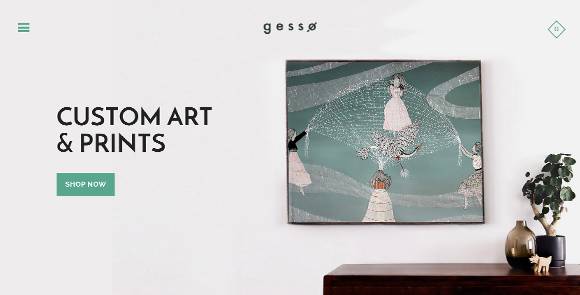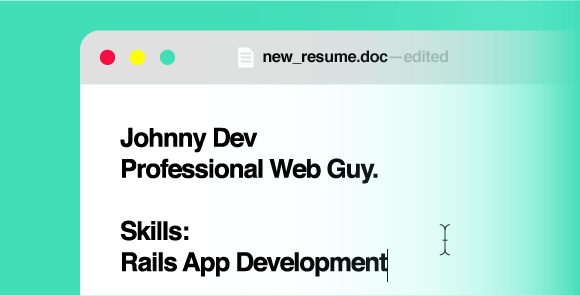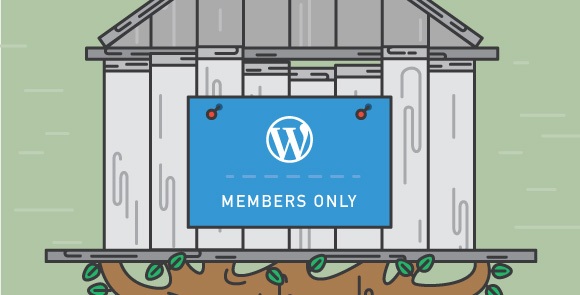
Today, healthy is definitively mainstream, which means the healthy consumer segment is only growing. More than ever, people are watching what they eat and what they do. The “Better-For-You”, or BFY, products category has grown tremendously in the past five years, answering to consumer demand for products that are, as its name suggests, better for you. Nielson’s 2015 Global Health and Wellness Report also revealed that 88% of consumers are willing to pay more for healthy, which opens up increasing opportunities for healthy lifestyle brands.
Millennials are driving the demand for healthy choices and healthy lifestyle, making them the key players in this consumer segment. As millennials come of age, their spending power will only increase and they’re going to spend smart. Here’s what healthy lifestyle brands should know about millennials and what they want.
Healthy that doesn’t sacrifice taste
“Healthy” actually means health-oriented. Healthy may be more prevalent, but consumers are still indulging. The shift is that millennials making choices that are healthier in comparison. They’re are eating cupcakes made with organic flour, and fries that have sea salt and are baked instead of deep fried. They’re choosing to cut out GMO ingredients, chemicals that they can’t pronounce, and focusing on alternatives to change their diets.
Even though healthy choices are on the rise, 89% of consumers still consider taste to be the number one consideration.
A millennial healthy lifestyle is in reality one of moderate healthiness, centered on consciousness rather than healthiness. It’s not only about being healthy, it’s about being healthy and tasty. Even though healthy choices are on the rise, research shows that 89% of consumers still consider taste to be the number one consideration for purchase, and the healthiness of an item comes in at a close second. Today’s consumers want to have their cake and eat it too. Health is no longer silo-ed to bland oatmeal or a no-chocolate-ever diet attitude. Which means, we have KIND bars with less than 10 grams of sugar that still taste just sweet enough, and Food Should Taste Good sweet potato chips that are gluten-free, non GMO, low-sodium and 0g cholesterol.
Tailored products for tailored diets
Cheerios created their classic oats flavor in 1941, and has slowly been diversifying their products over the years. In 1979, they introduced Honey Nut Cheerios to cater to those who wanted the benefits of Cheerios’ cholesterol-lowering whole oats but with a sweeter taste. Last year, Cheerios released Cheerios Protein to cater towards those looking at high-protein diets, and next year, there will be quinoa-based Cheerios for Americans who have become interested in ancient grains. Furthermore, there’s also a selection of Cheerio products that will be gluten-free, coming 2015 under the headline “Oats for all”. These recent advancements are directly informed by changing consumer diets, of which there are many.

Can you do it all, like Cheerios? Maybe, maybe not. Tastes these days are diverse and increasingly specific within healthy lifestyle consumer segment. There are vegetarians, vegans, gluten-free eaters, paleo-eaters who eat no grains and consumers with a high-protein diet. Better-for-you millennials are demanding specificity and products tailored to their diets. But being able to diversify your product line quickly to meet all these new dietary needs can be difficult and costly. Rather than attempting to attract all healthy lifestyle consumers at once, focus on a niche market and then grow your product line from there.
Connections that go beyond the product
Millennials are loyal, social and they like to talk. Which means they can also be your best brand ambassadors if you let them. Consider the divisive forces of brands – are you team JawBone or team FitBit? There are pages and pages of articles falling into one camp or the other on Google. Reward your influencers and followers by engaging with them online and off. This targeted segmentation and interaction will only serve to fuel further loyalty and create positive brand experiences that lead to more social engagement.
Brands who interact with millennial consumers to define a lifestyle create stronger followings.
Millennials are also looking for support in their lifestyle. Brands who interact with millennial consumers to define a lifestyle create stronger followings. Pressed Juicery (who makes their foray to New York this year) created a separate lifestyle magazine, The Chalkboard Mag, to speak to their consumers. The Chalkboard Mag shows how juice can fit in nonchalantly into a healthy, well-rounded lifestyle. Just because the primary product is juice does not mean that their content is limited to juice cleanses or recipes. Their magazine touches on fitness, fashion and even beauty products that are part of their female target’s lifestyle. Think also about Clif Bar’s Instagram strategy. They concentrate their images on an outdoor, climbing and hiking lifestyle rather than the benefits of their product. It’s implied that their product fits into the athletic lifestyle.


Price sensitivity on healthy premiums
Organic and non GMO products are generally known to be premium, and consumers have been spending to get it. One of the first organic purchases a consumer makes is usually milk. A gallon of Horizon Organic could cost between $5-$6 dollars normally, compared to a $1-$2 price point for generic milk brand. That makes organic milk almost 200% more expensive. Yet sales of organic milk are rising fast, having increased nearly 30% since 2006. In fact, demand is so high that there is a shortage of organic milk. This has caused further price hikes reaching up to $8, a price at which consumer loyalty is sure to be tested.
Although consumers are willing to pay more for healthy, there is a price ceiling for millennials. When Annie’s first launched frozen foods, they priced their pizzas at $9 a box, almost double what other brands were charging. That proved to be too high of a price point, and when they launched frozen pizza bagels a year later, they priced at $4 a box instead and saw much better traction.
Transparency and authenticity
Information access is flat and consumers will be doing their research online. This is perhaps the most important point about millennials – they’re digital natives. They don’t want to be disappointed by brands they trust.
Millennials don’t want to be disappointed by brands they trust.
A few years ago, Kashi was exposed for not closely adhering to the definition of “natural” ingredients, a term which is not rigorously regulated by the FDA as mentioned above. It turned out that Kashi cereal products use a soybean which was genetically modified for herbicide protection. Although Kashi did not legally use “natural” incorrectly, there was a huge consumer backlash resulting in a public apology from Kashi. Visiting Kashi’s site now, you’ll see that they’ve created a ‘Natural Living Library’ that helps explain and define what “organic” and “natural” mean to their brand, as well as the benefits of using organic and natural products.

Even fashion is taking on ecological responsibility and sustainability with brands like Reformation and Alternative Apparel gaining traction. Taking a glance at Alternative Apparel’s About page, they make clear claims on what they’ve been able to accomplish and are working towards. Key words include “non-toxic”, “low-impact”, “eco-friendly”, “sustainable”, and “no chemicals”. Consumers want to know what the process of manufacturing is and how brands are being responsible.

A way to give back
Looking forward, being socially conscious about the community and the world may be an important factor for millennials. Although better-for-you traditionally has been different from LOHAS (Lifestyles of Health and Sustainability) , brands that are committed to their community are being received well by their consumers. There’s an added psychological benefit to know that you’re also purchasing from a company that also gives back to its community. Many brands are adopting a similar model to Tom’s, which has a Buy One Give One philosophy. Tom’s has since diversified their giving philosophy to have four components, shoes, sight, water, and female healthcare. Warby Parker, Harry’s, Sustain Natural have charitable programs which give back, too, adding a further feel-good element to their brands.

Local, independent, and personal
The reason local becomes important is because we’re consciously decreasing the size of our ecological footprint. But there’s also this idea that local is often independent. And independent is often implicitly understood to have stronger values and beliefs – meaning less likely to use pesticides, less likely to use GMO. The image that our minds draw up are family-run organizations that are passionate and in love with their craft. This may not always be the case, true, but these are the emotional connotations we attach to local.
Humanize your brand to generate deeper personal connections with your consumers.
Part of Sweetgreen‘s selling point is that they buy and source local for their products. The local list board in every Sweetgreen location lists all the nearby farms and greenhouses where they’re receiving their vegetables (seen below). Consumers are comforted that their food is coming from actual farms rather than factory lines.

Sweetgreen also appeals to their consumers by emphasizing the individualized nature of their service. Each salad you purchase in store is prepared by one server the whole way through, adding to the connotations of local. If you ordered online, they make sure to let you know who packaged and created the salad for you by signing their name on the label. It’s personal and it feels good. Think about how to humanize your brand to generate deeper personal connections with your consumers.
Looking forward
It’s easy to be healthy and conscious these days. Not only can we purchase healthy brands in convenience stores, bodegas as well as Whole Foods, but the growth of Instacart and FreshDirect mean that these brands are even closer to our fingertips. A swipe and a click away, while we’re purchasing our groceries or on our phones. The prevalence of healthier, alternative choices aren’t going away. But in this crowded space, competition grows tighter and brands will have to be more specific about their differentiation and qualifications. As the spending power of millennials increases, so does their ability to discriminate. It’s important for healthy lifestyle brands to create customer loyalty by understanding millennial needs and their penchant for healthy.
Illustration by Andres Maza.




